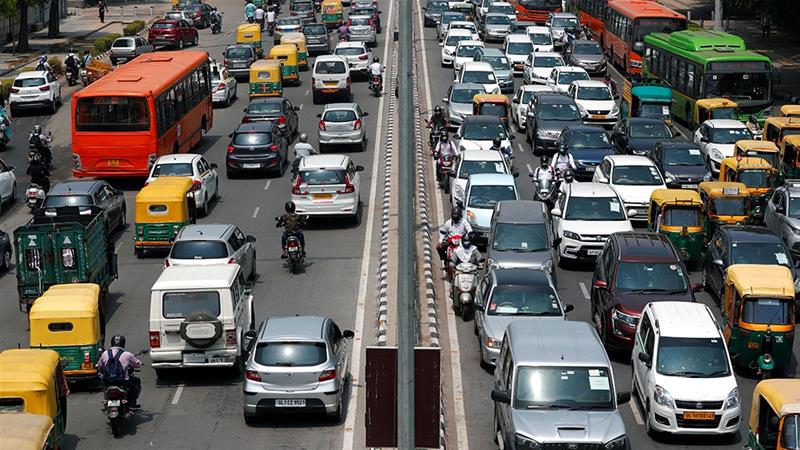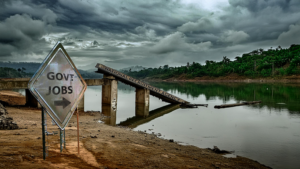Julia Conley, Umang Kumar and Suvrat Raju
WHO: Countries Rushing to Reopen Risk ‘Immediate Second Peak’ In Covid-19 Infections
Julia Conley
The director of the World Health Organization’s program overseeing health crises warned Tuesday that countries that rush to reopen their economies risk immediately causing a massive increase in coronavirus infections and deaths.
Dr. Mike Ryan, head of WHO’s Health Emergencies Program, addressed the incorrect assumption that once a country’s Covid-19 cases begin to decline, the first wave of the pandemic is on its way out and governments will have several months to prepare for a potential second wave in the fall.
In addition to preparing for another wave of outbreaks later this year, Ryan said that public health officials and governments “need also to be cognizant of the fact that the disease can jump up at any time.”
“We cannot make assumptions that just because the disease is on the way down now it is going to keep going down and we are [getting] a number of months to get ready for a second wave,” said Ryan. “We may get a second peak in this wave.”
Although people across the U.S. and parts of Europe have begun to venture out into public life and governments have ordered shops and restaurants to reopen, giving the impression the danger is lifting, Ryan pointed out that the world is still in the middle of the first wave of the global pandemic, with cases rising in Africa, South Asia, and Central and South America.
In Europe and North America, where cases currently appear to be on the decline, officials must “continue to put in place the public health and social measures, the surveillance measures, the testing measures, and a comprehensive strategy to ensure that we continue on a downwards trajectory and we don’t have an immediate second peak,” Ryan said.
Ryan’s comments came days after Americans were photographed packed onto California beaches and Maryland boardwalks over Memorial Day weekend.
All 50 U.S. states have at least partially reopened, and states which have implemented the most conservative reopening plans are set to end stay-at-home orders by early June.
States including Arkansas, Maryland, and West Virginia have seen their infection rates increase since reopening large parts of their economies in recent weeks.
In European countries including the U.K., France, and Denmark, cases have begun to go down, but Ryan warned leaders in those countries to remain vigilant as well.
In the U.K., some schools are set to reopen June 1 and non-essential businesses have been directed to reopen June 15.
On Twitter, writer and activist Richard Seymour said governments are “pretty determinedly leading us into the second peak.”
Ryan noted that during the 1918-19 influenza pandemic, the world saw three waves over a year and a half. Most U.S. deaths took place during the second wave in the fall of 1918, and public health experts placed blame for the high death toll on government officials who were reluctant to impose quarantines during the less deadly first wave.
As of Tuesday, more than 98,000 Americans have died of Covid-19, and the worldwide death toll has surpassed 346,000.
(Julia Conley is staff writer for Common Dreams, a US non-profit news portal.)
◆◆◆
Live and Let Die – The New Mantra of Learning to Live with the Virus
Umang Kumar, 1 June 2020
About a month ago, when, as it seems now, the Covid-19 world was still young and economy reopenings were still few, Mike Davis, the American labor organizer, wrote an ominous piece titled, Reopening the Economy Will Send Us to Hell. It almost seemed contrary to the common wisdom that the world needed to reopen as it was choking because of the loss of economic activity.
The point Davis made, fully aware of his role in the labor movement space, was that the call for reopening was being rammed through without regard to workers’ safety in a world where the virus was still abroad. The reasons for reopening, if not outright an act hiding behind exceptionalism, were an attempt to regain business with little concern for workers.
“People desperately need to go back to work and save what they can of their lives. But heeding the siren call of the MAGA [Make America Great Again] demonstrators, puppets on strings manipulated by hedge funds and billionaire casino owners, to “reopen the economy” would only result in tragedy,” he observed.
This is a concern that has been echoed in various quarters, though it seems very hard to make the case. A TIME magazine report, titled ‘As Washington D.C. Weighs Reopening, African Americans in the Nation’s Capital Brace for the Worst’, echoed similar views about the effect of reopening on the most marginalized.
It cites D.C. Mayor Muriel Bowser’s concerns on how the federal government in the US views the impact of reopening: “There is this kind of a callous calculation happening that surprises me,” she says. “It’s kind of like, ‘Well, this COVID is killing old people and, Oh, well. It’s killing black people, and poor people and essential workers. Oh, well.’”
In India, the Economic & Political Weekly took up this in its editorial of May 16 appropriately titled Living with Covid-19, pointing out that such statements by governments seek to hide their limitation in ensuring the citizens’ safety: “Living with the virus…flies in the face of official claims that are simultaneously made by the government to ensure the people that the country is medically as well as infrastructurally well-equipped to deal with the virus.”
The shift in the state’s stance was especially marked in the prime minister’s last speech to the nation, as noted by a piece in the Financial Times: “[W]ith the economy collapsing and public finances severely strained, New Delhi now wants Indians to forget their fears and get back to work. In his most recent national address, Mr Modi made no mention of containing the virus or even ‘flattening the curve’. Instead, he urged Indians to look forward, rebuild and learn to live with the disease. ‘Corona will remain part of our lives for a long time,’ he said. ‘But we cannot allow our lives to be confined only around corona.’”
With the return of the migrants, one hears constant news of the surge of Covid-19 cases, such as those with headings like “Returning migrants cause surge of Covid-19 cases in rural Bengal,” or “Karnataka: Returning migrants push up case count.” The onus and the blame of the continuously galloping numbers is now being conveniently shifted to the returning migrants.
Various political leaders have offered the logic that the state administrations are better prepared now than they were in the early days of the lockdown.
A BBC report, while appearing to be shocked at how “India is roaring – rather than inching – back to life amid a record spike in Covid-19 infections,” still seems to buy the logic of the lockdown for ensuring preparedness. It quotes a health expert as saying, “The original purpose of the lockdowns was to delay the spike so we can put health services and systems in place, so we are able handle the spike [when it comes]…That objective, to a large extent, has been met.”
But as another article in the EPW observes regarding the tearing hurry of lifting the lockdown, “No complementary health measures have been put in place to prepare the country for when the lockdown is finally lifted.”
News reports such as those titled “Corpses In Hallways, Patients On Floor As Virus Overwhelms Mumbai,” hardly instill confidence in the preparation that have been put in place.
In the capital Delhi, whose chief minister was also one of the early proponents of living with the virus, the number of positive cases keeps creating a new record each day. A leading piece on June 1 on the website of the newspaper, Indian Express, screamed in big letters, “Delhi’s rising toll is worrying.”
Not just that, Delhi has been under the scanner for misreporting its death toll. As a virologist observed recently, “A suo moto order of the High Court of Delhi of May 28, notes that there is no room left in the Covid-19 mortuary of Lok Nayak Hospital, which is Delhi’s largest Covid-19 treatment centre. All this suggests that mortality figures everywhere may be underestimated.”
Every day almost every region specific news is reporting “new highs” in reported cases – be they from cities like Delhi, Mumbai, Gurgaon, or states such as Telangana, Bihar and Bengal. It is true that the fatality rates of the Covid-19 are fairly low, and this is something that the various governments are banking on. Yet, if more and more people get infected, even with low fatality rates, the number of those who succumb to the illness will be high, something that cannot be acceptable.
As another report points out, the very datapoint that the Indian government and the press tom-toms, the number of the recovered patients, is actually pretty low (about 41%) compared to several other countries (even Pakistan’s is higher).
“It is going to be a mess,” according to Jayaprakash Muliyil, a leading Indian epidemiologist, as reported in the Washington Post.
This same report informs that, “a model developed by statisticians and epidemiologists at the University of Michigan is predicting that India will have nearly a million cases by July 15 if there is a ‘cautious’ resumption of activity after the lockdown. ‘In India, the curve hasn’t turned the corner,’ said Bhramar Mukherjee, a biostatistician who leads the project. ‘You have deferred the peak.’”
What is also worrying is the lack of detailed and reliable data, either from individual state governments or from the central health bodies. As this article explains, among other things, data on details of testing, clinical management (“how long patients stay in hospital or a care facility and what clinical management is being followed for them.”), and patient demographics are missing. So, the states are lifting the lockdowns progressively with no uniform, agreed upon set of criteria and no robust data to back their decisions.
Only recently has the ICMR decided to collect proper data on the number of deaths and the testing capacity seems to be ramped up only fitfully. How can such efforts infuse confidence in people about the re-opening process?
Not just that there is no vaccine, there is still not definitive and authoritative knowledge about the virus’s mutations and transmission methods. Scientists and researchers are learning as they go.
Of course, one understands that the Indian lockdown has been disastrous for the most vulnerable segment of its population, the big chunk of its workforce that is employed in the informal economy. So, continuing the lockdown in the way it was imposed by the Indian government of course makes no sense. In fact the implementation, and now the lifting, are both largely ill-thought exercises.
Right now, it is the pell-mell way of the reopening and the very unscientific exhortation of “learning to live with the virus,” which need to be called out for what they are – a desperation and a cover-up of the lapses of administrations, as the EPW editorial points out.
In fact, several members of the prime minister’s Covid-19 task force have expressed the view that the “lockdown failed due to unscientific implementation.” They felt that “the government failed to use the time to conduct comprehensive contact tracing, scale up testing, and prepare India’s medical infrastructure for the pandemic,” observations that fly in the face of the claims by government officials that they are better prepared now.
A small, and recently economically troubled country like Venezuela is implementing massive door-to-door testing; and Vietnam has tided over the virus crisis till now without a complete lockdown – but following the scientific practices of testing, contact tracing etc.
Vietnam has not had a single covid-19 related fatality till now – they have no reason to tell their citizens that they need to learn to live with the virus.
Early in March, President Trump had pooh-poohed the threat posed by the virus as being less than that posed by the flu in a tweet: “So last year 37,000 Americans died from the common Flu. It averages between 27,000 and 70,000 per year. Nothing is shut down, life & the economy go on…”
So, was he right all along then, about the need to learn to live with the coronavirus? That would be a hard sell to the families of more than 100, 000 Americans who have perished till now from the virus.
(Umang Kumar is a writer based in Delhi NCR.)
◆◆◆
Suvrat Raju adds, in an article: “India’s Lockdown has Failed. Here’s What We Can Learn from it”, published in the Wire (extracts):
As India approaches the end of its lockdown, the Central government has been at great pains to emphasise that the lockdown has “saved lives”. On May 22, for instance, the government touted a study by the Boston Consulting Group (BCG) and claimed that the lockdown had “saved between 1.2 – 2.1 lakh lives”. Such claims involve a comparison of the current figures for deaths with those obtained by extrapolating the early growth rate of the pandemic. But a little reflection shows that this is not the right metric to use to gauge the efficacy of the lockdown.
This is because even if a lockdown reduces the number of infections for a short period, in the absence of sustainable long-term measures, the pandemic will resume its original trajectory when the lockdown ends. Simple models suggest that, in such a scenario, when the pandemic has run its course, it will have extracted almost exactly the same final toll in lives as it would have without the lockdown.
Therefore, the lockdown should be evaluated by asking whether it has put the country’s healthcare system in a position to ensure that the pandemic remains suppressed for the foreseeable future. This is a question that the government has been reticent to address, for an obvious reason. Except for a few states, like Kerala, the data suggests that large parts of the country are now in a worse position than they were at the beginning of the lockdown. This implies that the country has squandered the possible epidemiological benefits of the lockdown, while paying its terrible social costs.
If the lockdown is imposed early in the epidemic – as it was in India – and if the lockdown fails to quash the epidemic – as it clearly has not done in India – then its effect is only to delay the entire curve of infections. So, a closer examination should have shown the government that a lockdown, by itself, does not “save lives” but only “delays deaths” by a few weeks.
In the absence of a vaccine, which would reduce the number of susceptible individuals, the only effective measures are those that reduce the spread of the infection in the long term. Individuals can contribute to this objective through precautions like wearing masks or physical distancing. But such precautions could have been encouraged even without the lockdown.
On the other hand, the primary responsibility of the state is to rapidly identify infected individuals through testing, and trace and isolate their contacts to prevent them from spreading the infection. At a national level, it is clear that the lockdown has not been used effectively for this purpose.
One indicator of this failure is obtained by comparing the number of recorded deaths to the number of identified infections. Studies suggest that when all cases, including mildly symptomatic ones, are counted, the true “infection fatality rate” of COVID-19 is below 1%. Indeed, in countries like Iceland, which have tested a large fraction of their population, or even in Kerala, this is also reflected in the current ratio of recorded deaths to recorded infections.
On May 28, India had recorded about 4,500 deaths from COVID-19. Using the estimated fatality rate above and noting that deaths lag infections by about 18 days, this suggests that there were at least about half a million cases on May 10. Extrapolating this figure to the present, using the doubling time of recorded deaths, leads to the conclusion that there are more than a million cases in the country today. This implies that the 158,000 cases that the authorities have identified constitute less than one-sixth of all cases, and moreover that most of the undetected cases are currently active. Contact-tracing cannot succeed in such a setting.
The government has also failed to use the lockdown to ameliorate the shortage of personal protective equipment. In his speech on May 12, the prime minister explained that domestic manufacturers could produce “two lakh N-95 masks” per day. But this is a small number by global standards. Figures from the US suggest that, under best practices, hospitals may require as many as 35-40 masks per day per patient. Even if masks are rationed and reused, domestic manufacturing capacity is insufficient to meet the demand from the increasing number of cases.
Most seriously, the lockdown has destroyed the livelihood and economic security of millions of people. This not only points to an economic and humanitarian crisis, it has direct epidemiological implications. Economic compulsions will make it impossible for people to sustain physical-distancing measures that might otherwise have been manageable. Therefore, by relegating the welfare of people to an afterthought, and by offering only measly relief measures, the government has contributed to the failure of its own epidemic-control efforts.




